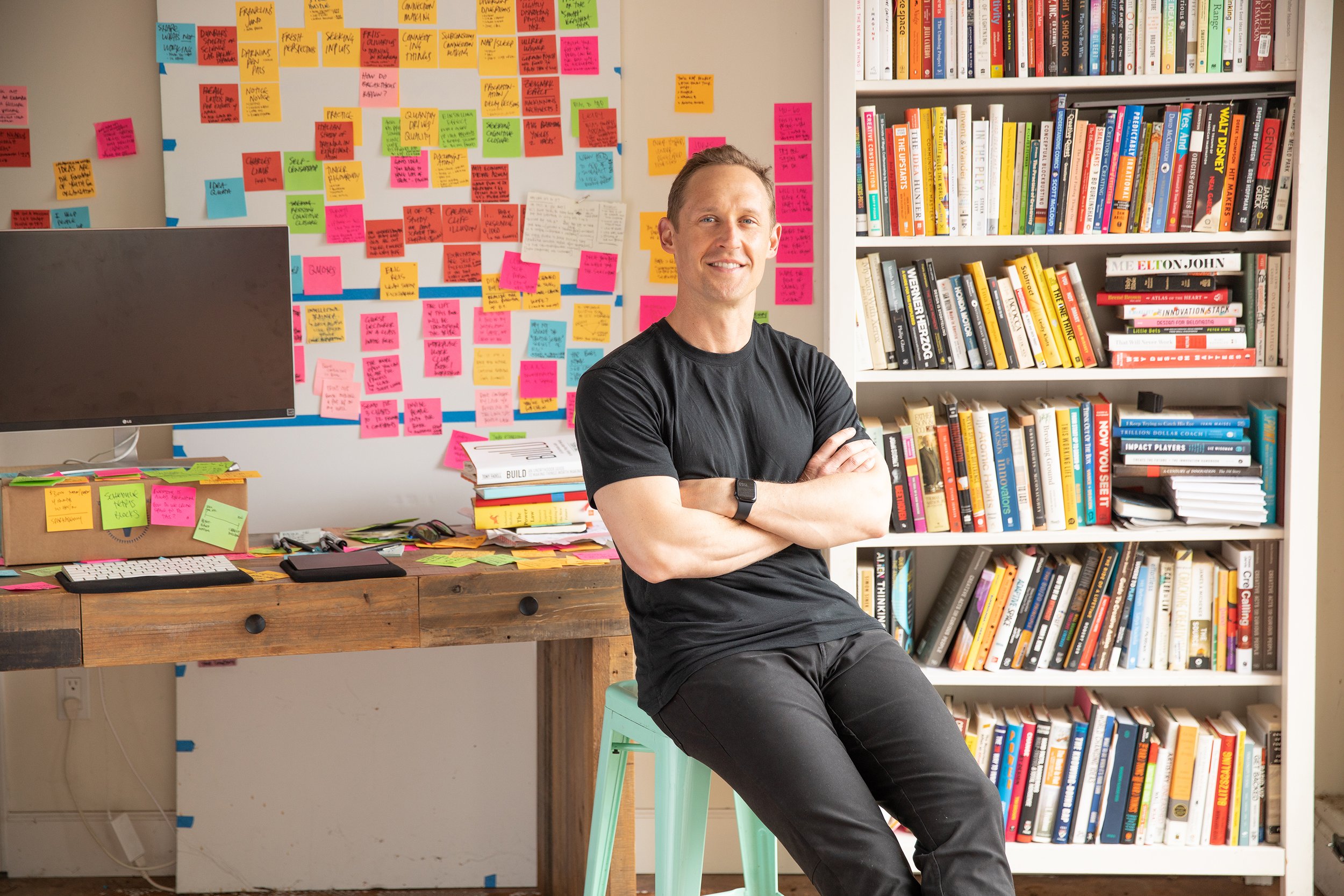
Methods of the Masters
A blog on the art & science of creative action.
Stop Fighting AI Glazing
Everyone’s panicking about “AI glazing.” But what if it’s a feature, not a bug? The creative industry's most successful practitioners understand something the rest of us are missing.
Hit Reset: The Secret Productivity Hack Four AI Leaders Don't Want Their Teams to Know
This post marks my 200th edition of Methods of the Masters—and serves as a fitting bridge between my early focus on human creativity and more recent AI work. In an age of infinite AI inputs, our biology demands we cultivate equally intentional human disconnection strategies.
The Simple Power of Joy and Delight
Special guest post by Brendan Boyle, one of Stanford’s most beloved professors, acclaimed toy inventor, and founder of IDEO’s Toy Lab. He’s taught me more about play than anyone other than my own children.
The Ultimate AI Playbook: From Measuring Adoption to Delivering Impact
In five years, no one will care how many people logged into ChatGPT. They'll care about who used it to transform their work. The organizations that understand the difference between more use and better use are quietly outperforming their competitors-while everyone else celebrates meaningless "adoption" metrics.
Your Team Just Quoted 8 Weeks. What if They're Off by 99%?
I thought I was running a standard innovation workshop with one of my favorite clients. Instead, I came to face to face with my own biases, and accidentally broke an entire organization's understanding of what's possible.
It's Not An AI Problem. It's A You Problem.
Last week, I proposed a simple but fundamental shift: we need to stop thinking about AI as a technology rollout and start treating it like a new teammate. What I didn't fully explain is that this isn't just a semantic distinction. It produces measurably better results.
Teammate, Not Technology
I’ve been seriously thinking about AI for over two years now, and I’m finally hitting my stride when it comes to my point of view. The fundamental shift I believe everyone must make is from thinking of AI as a technology, to thinking of AI as a teammate.
Don't Keep the AI Expert Waiting
Still waiting on other people before you tap AI? Big mistake. This post exposes the silent tax of “AI inaction,” hands you the five‑rung ladder for turning any model into your on‑call mentor, and launches a seven‑day sprint that will hard‑wire the habit—so you can seize the advantage while everyone else is still scheduling meetings.
Punish Inaction: Why Leaders Must Make AI Adoption Non-Optional
Last week, Shopify CEO Tobi Lütke released an internal memo that's been making waves. My take: this isn't just another tech CEO jumping on the AI bandwagon. It's the clearest articulation I've seen of a principle I've been exploring the past 18 months: the greatest risk with AI isn't failure—it's inaction.
Exponential Ideaflow: Why AI Will Surpass Human Creativity (And Why That's OK)
I'm best known for my work on innovation, creativity, and entrepreneurship. My “shift” toward AI might seem like a radical departure. But it's not a shift—it's an evolution. Having taught and spoken to tens of thousands from ~100 countries in the last two years, I’m more convinced than ever that AI isn't separate from innovation; it's the most profound innovation platform of our lifetime.
Stop Measuring AI Usage (Start Measuring AI Impact)
Behold the great AI measurement delusion: Organizations tracking usage metrics are missing the only thing that matters—impact.
More use isn't better use. Better use is better use.
Beware the Siren Call of the Wrong Question
The first question an innovator must answer is not “can I make it?” but rather, “should I?” This has become something of a mantra among CEOs I work with, as a needful protection against the gravitational pull of the organizational bureaucracy.
Practice Process Mindfulness
One of the defining contributions the d.school is helping teams ask themselves, “What kind of thinking is appropriate, when?” We call such clarity being “Mindful of Process.” And it can seem like semantics until you realize we need to show up in different ways.
Try This Now to Build AI Muscles
You’re probably getting fat on AI content: bingeing podcasts, hoarding newsletter tips, saving Twitter threads... While it feels productive, all that consumption is just giving you a knowledge sugar high. And like any sugar high, it’ll crash—leaving you with exactly zero new capabilities.
Wander With Purpose
The most inventive folks I’ve studied are disciplined about seeking inspiration. If you don’t make time to get out of the box, you will not be able to think out of the box, either. It’s not that complicated, but it requires you obliterate clean compartmentalization in favor of messy meandering.
Do Work For Free
In this special guest post, Mo Bunnell, Author of Give to Get, makes a compelling case for a counterintuitive strategy: giving gifts of your expertise as a way to build relationship and give clients a taste for your unique value proposition.
Make Room for Thinking
Sprints are a fantastic tool to drive innovation with efficiency. But sometimes you’ve got to be inefficient in order to create effectively. A few reflections on a troubling trend I'm seeing emerge among would-be innovation practitioners.
Your AI Task Force is Missing the Point
Undisputed "Beyond the Prompt" fan favorite Jenny Nicholson drops by to share some insights from her adventures helping folks innovate with AI. Important lessons for any leader looking to unleash their teams with this transformative technology.
AI’s Secret Weapon: Your Humanity
A funny thing happens when humans interact with AI—they start talking like robots. This is tragic. It's the very humanity that we often unwittingly withhold that guarantees lackluster output. To revolutionize your output with GenAI, revisit your own humanity.
How to Have an Innovative Idea: Three Simple Steps
Quick: come up with an innovative idea!
If you’re anything like the thousands of students I’ve coached in the last fifteen years, panic alarms just went off.
But the truth is, the creative process is hardly a mystery – in fact, it can be broken down into three simple steps.




















